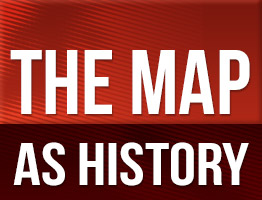This map is part of a series of 5 animated maps showing .
▶ View series: Independence for Spanish American colonies
SubscribeThe Second Phase of Independence
This map is part of a series of 5 animated maps showing the history of Independence for Spanish American colonies.
The first attempts at independence in the Americas ended in failure, after Ferdinand VII’s return to the throne and the intervention of General Pablo Morillo’s army. However, from 1816, the United Provinces of the Río de la Plata, which had remained nominally loyal, proclaimed their independence at the Congress of Tucumán
In 1817, a 5,200-strong army led by the Argentinian general, José de San Martín, began marching into Chile. It crossed the Andes and, backed by Chile’s General Bernardo O'Higgins, defeated the royalist army at Chacabuco. The following year, O'Higgins became Supreme Director of the nation and proclaimed Chile’s independence.
In 1818, Simón Bolívar landed in Colombia and defeated the royalist army in the Battle of Boyacá. He then declared Gran Colombia independent and was to remain its president until 1830. He then prepared to conquer Venezuela and Ecuador.
In 1820, a powerful army was assembled on Spain’s Andalusian coast in order to reconquer America. But after Rafael del Riego's uprising against King Ferdinand VII, the troops scattered, leaving the American royalists without reinforcements.
In 1821, Bolívar defeated the royalists in Carabobo and conquered Venezuela. That same year, San Martín headed north, captured Lima, and proclaimed Peru’s independence. In 1822, Antonio José de Sucre, Bolívar’s lieutenant, liberated Ecuador after the Battle of Pichincha.
That year, the two leaders, Bolívar and San Martín, met up at Guayaquil. During a private meeting, the two men found they disagreed on how to move forward with the war of independence, particularly regarding Peru. San Martín left Guayaquil immediately and headed for Europe.
In 1824, Bolívar’s liberation forces secured victory over the Peruvian royal army in the battles of Junín and Ayacucho. Patriots from Upper Peru decided to name their country Bolivia in honour of Simón Bolívar.
In the north, Spain negotiated the sale of Florida to the United States in 1819 to make sure it retained ownership of Texas and California.
In February 1821, the royalist and anti-liberal general, Agustín de Iturbide, drew up the Plan of Iguala. This document, approved by both patriots and loyalists, was a statement of Mexican independence. The throne was offered to King Ferdinand VII who had been forced to make concessions during a liberal uprising in Spain in 1820. But the offer came to nothing, and Iturbide proclaimed himself Emperor, taking the name Agustín I. He was deposed by General Santa Anna two years later and Mexico became a Republic.
That same year, Central America split from Mexico to form the United Provinces of Central America.
In 1828, Uruguay won its independence after driving out the Portuguese-Brazilians who had occupied the province since 1821.
In 1844, the Captaincy General of Santo Domingo, occupied by Haiti since 1811, regained its independence as the Dominican Republic.
All that remained of Spain’s American colonies were Cuba and Puerto Rico.
